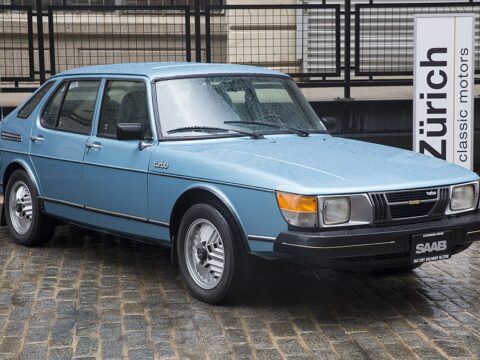Some RV designs introduced groundbreaking concepts but never gained widespread popularity. These innovative models featured advanced technology, unique layouts, or unconventional materials that set them apart. However, factors such as high production costs, limited market demand, or practicality issues prevented them from achieving success. Despite their potential to revolutionize the industry, these RVs remained niche or were discontinued, making them interesting yet elusive examples of what could have been.
Contents
GM Futurliner (1939-1956)
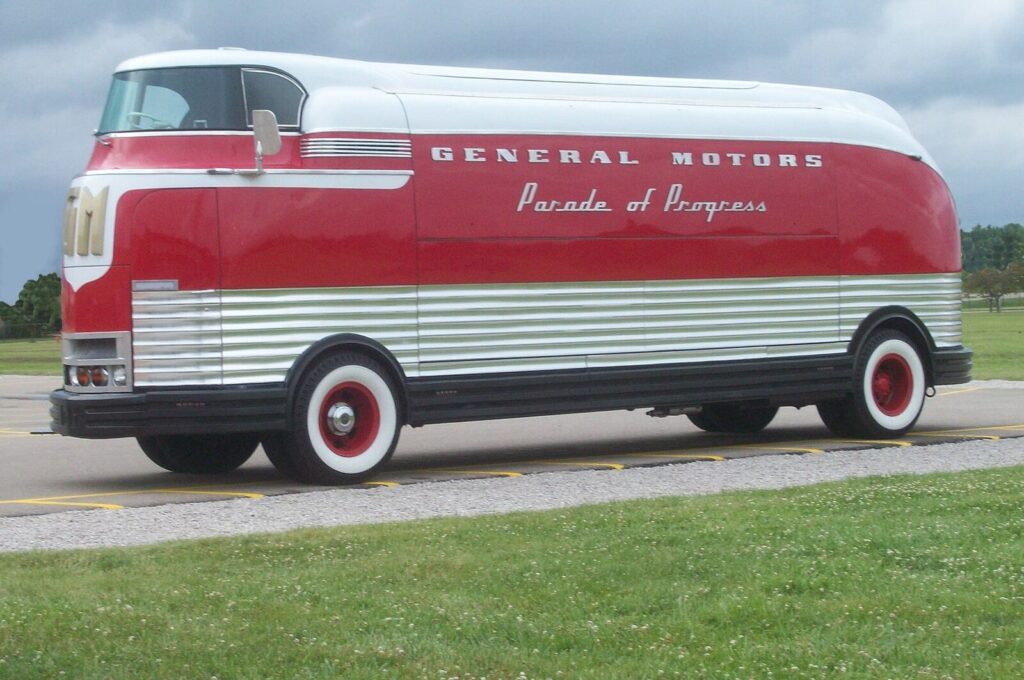
The GM Futurliner was a groundbreaking RV concept designed by General Motors as part of their Parade of Progress, a traveling exhibition showcasing futuristic technology. The Futurliner featured an aerodynamic design with a large, bus-like body, a centrally mounted driver’s seat, and massive side panels that opened to reveal display areas. Despite its innovative design and impressive presence, only 12 units were ever built, and the concept never took off commercially. The Futurliner’s size and complexity made it impractical for general use, and its purpose as a mobile exhibition vehicle limited its appeal to the broader RV market.
GMC Motorhome (1973-1978)
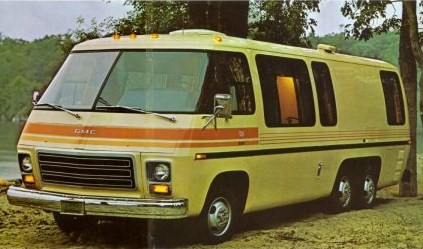
The GMC Motorhome was a groundbreaking RV designed with a front-wheel-drive layout and a low center of gravity, offering superior handling and stability compared to other RVs of its time. It featured a unibody construction and a fiberglass exterior, making it lightweight and aerodynamic. Despite its innovative design and popularity among a niche group of enthusiasts, the GMC Motorhome never achieved widespread commercial success. The economic downturn of the late 1970s, combined with the high cost of production, led to its discontinuation after only five years.
Vixen 21 TD (1986-1989)
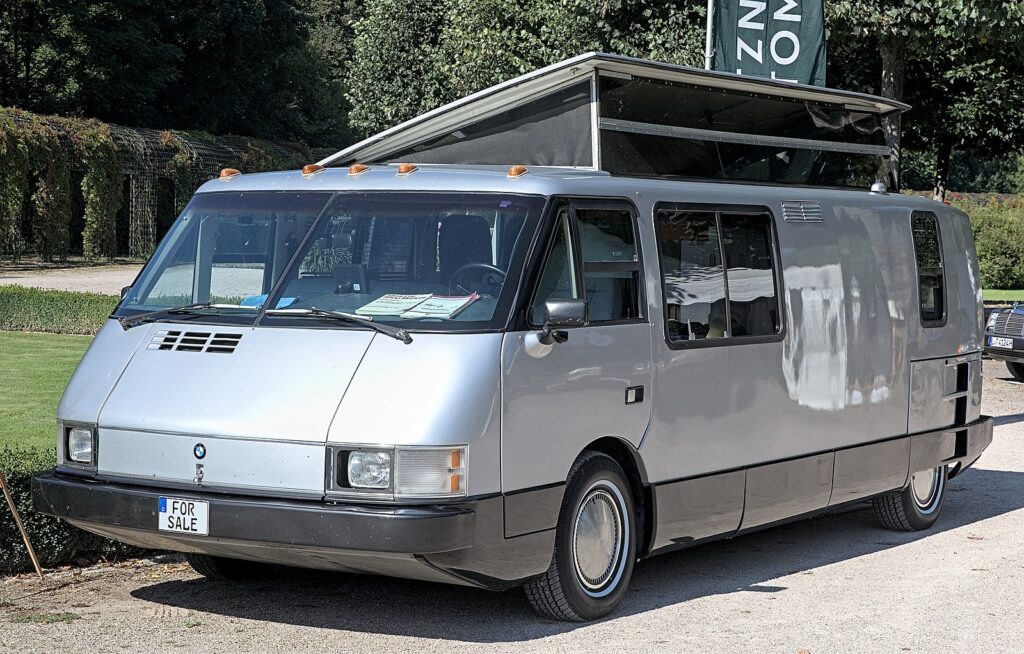
The Vixen 21 TD was a revolutionary RV designed by former BMW engineer Bill Collins. It featured a sleek, aerodynamic design with a fiberglass body, a pop-top roof, and a turbocharged BMW diesel engine. The Vixen was intended to be a more fuel-efficient and easy-to-drive alternative to traditional RVs. However, despite its innovative design and strong initial interest, the Vixen struggled to find a market. Production issues, high manufacturing costs, and competition from more established RV brands led to its discontinuation after just three years, with only about 587 units produced.
Ultra Van (1960-1970)
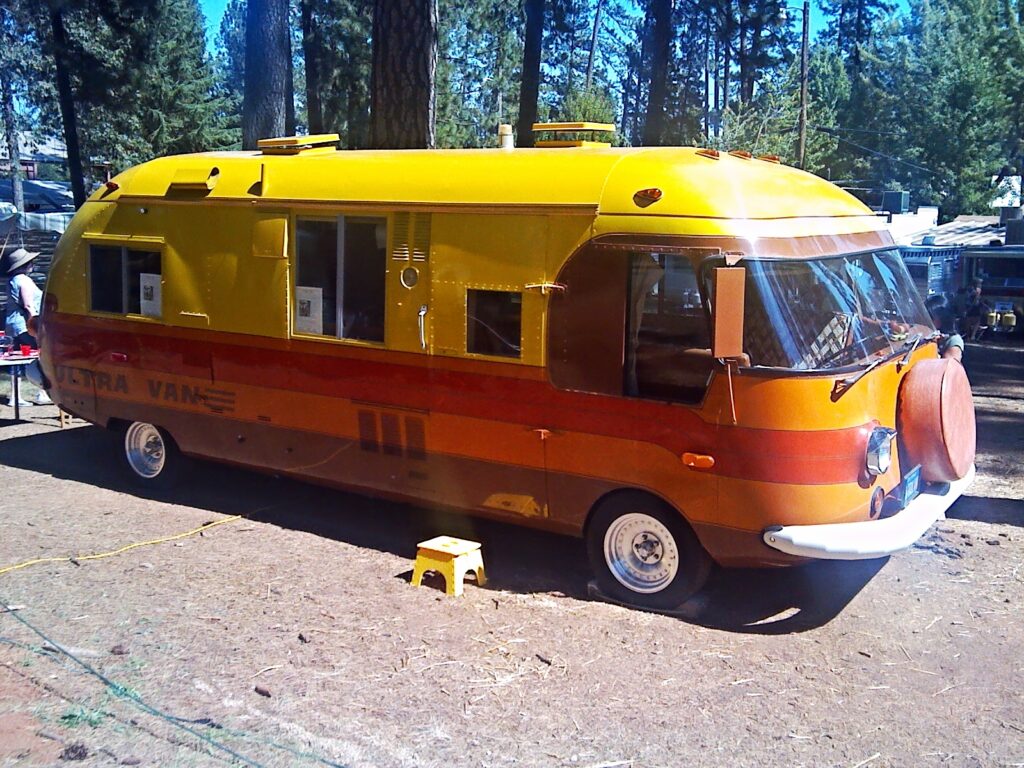
The Ultra Van was a unique, airplane-inspired RV designed by aircraft engineer David Peterson. It featured an all-aluminum monocoque construction, making it lightweight and fuel-efficient. Powered by a rear-mounted Corvair engine, the Ultra Van offered excellent handling and aerodynamics for its time. Despite its innovative design and cult following, the Ultra Van never achieved commercial success. The limited production capacity, coupled with the decline of the Corvair engine, led to its eventual demise. Only around 3,000 units were built, and today it remains a rare collector’s item.
Clark Cortez (1963-1979)
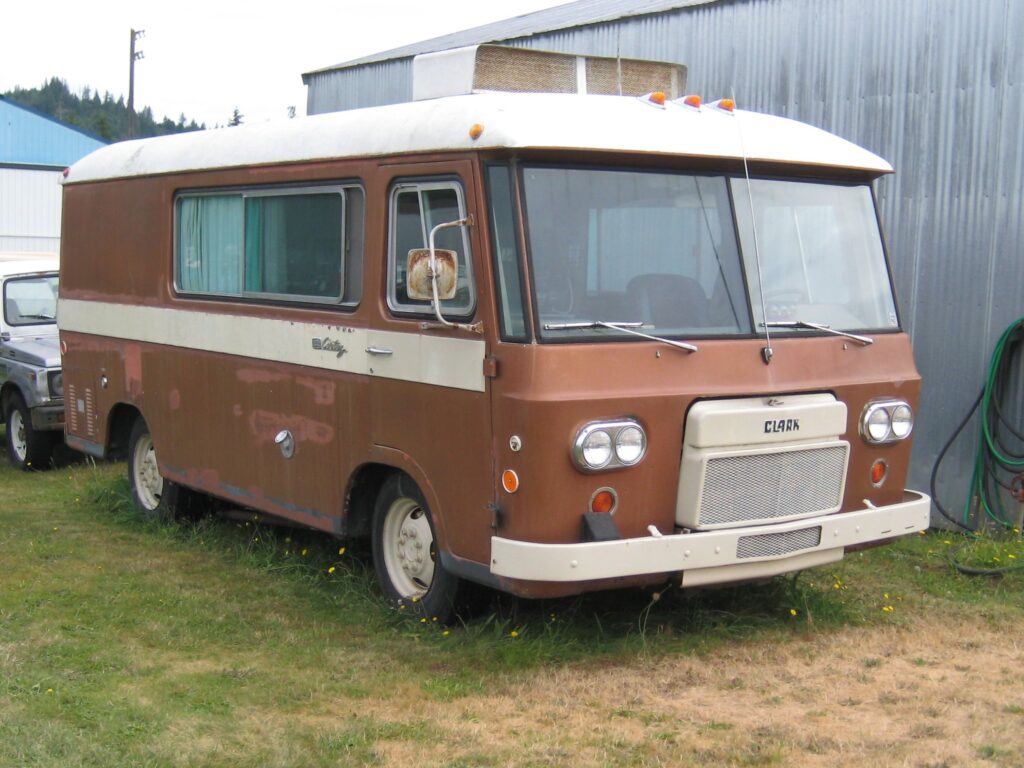
The Clark Cortez was one of the first front-wheel-drive RVs, featuring a compact and durable design that made it easy to maneuver and park. It had a steel unibody construction, which was rare for RVs at the time, and a Chrysler 225 Slant-Six engine. The Cortez was groundbreaking for its automotive-style handling and relatively low center of gravity. However, its high price and the introduction of larger, more luxurious RVs led to its decline in popularity. Despite its innovative design, the Cortez was eventually overshadowed by more conventional RVs, and production ceased in 1979.
Chinook RV (1960s-2005)
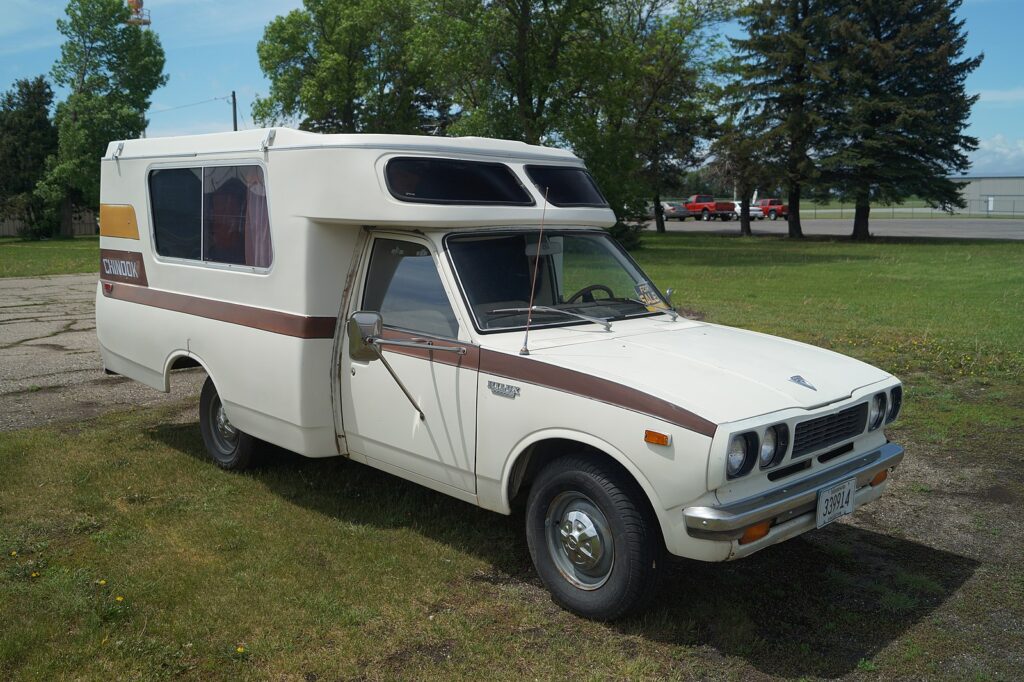
The Chinook RV, often referred to as the “Sports Car of Motorhomes,” was a compact, Class B RV known for its aerodynamic design and high-quality construction. It featured a fiberglass monocoque body and was built on a Ford or Dodge chassis. The Chinook was innovative in its blend of luxury and compactness, offering a fully equipped living space in a small, easy-to-drive package. Despite its loyal following, Chinook RVs were relatively expensive, and the brand struggled to compete with larger, more affordable RVs. Production eventually ceased in 2005, though the Chinook remains a cult favorite among RV enthusiasts.
GMC Transmode (1973-1978)
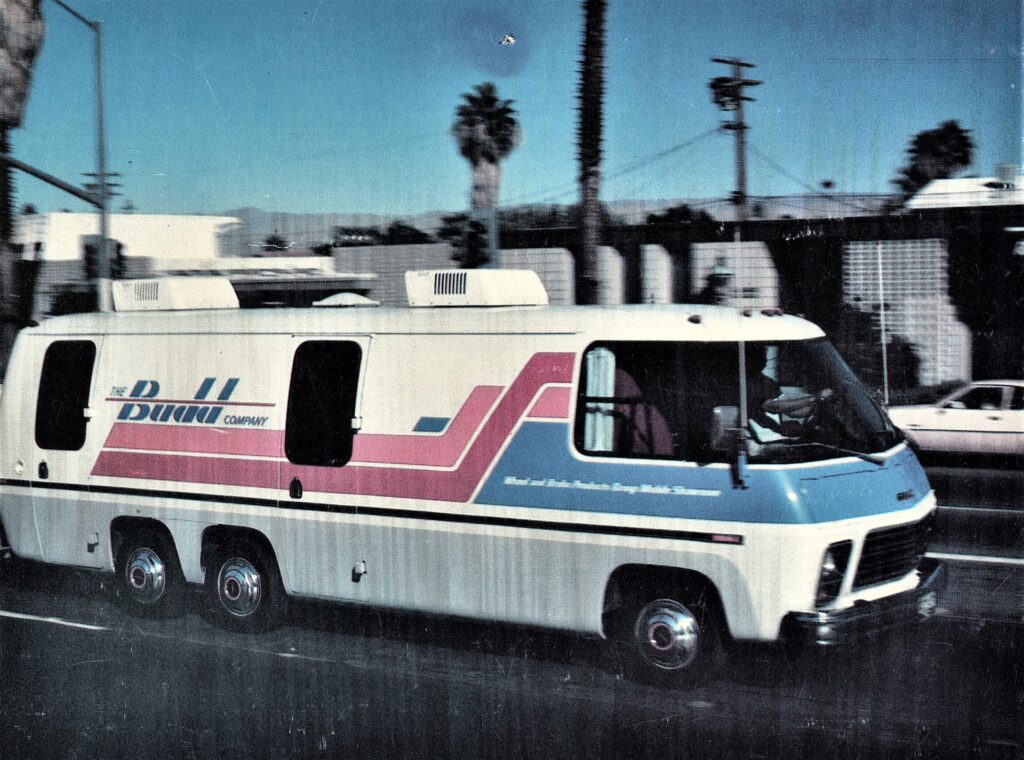
The GMC Transmode was a variation of the iconic GMC Motorhome, designed as a stripped-down version that allowed buyers to customize the interior to their liking. It featured the same front-wheel-drive layout and aerodynamic design as the GMC Motorhome, with a fiberglass body and a low profile. Despite its innovative concept and the flexibility it offered, the Transmode never gained widespread popularity. The high cost of customization and the niche market for such a vehicle limited its appeal, and production was discontinued after just a few years.
Revcon 250 (1970s)
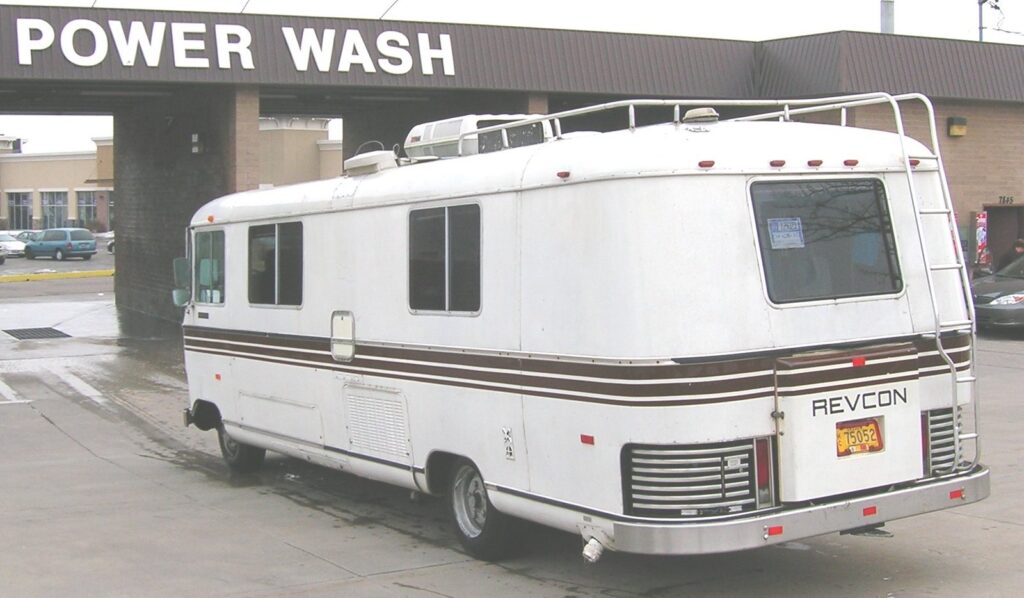
The Revcon 250 was a pioneering RV that featured an all-aluminum body, front-wheel drive, and independent suspension. These features provided superior handling, fuel efficiency, and a smooth ride, making it a standout in the RV market. However, despite its advanced engineering, the Revcon 250 struggled to compete with more traditional, less expensive RVs. The high cost of production and the niche market for such a specialized vehicle led to limited sales, and Revcon eventually discontinued the model.
Safari Trek (1991-2008)
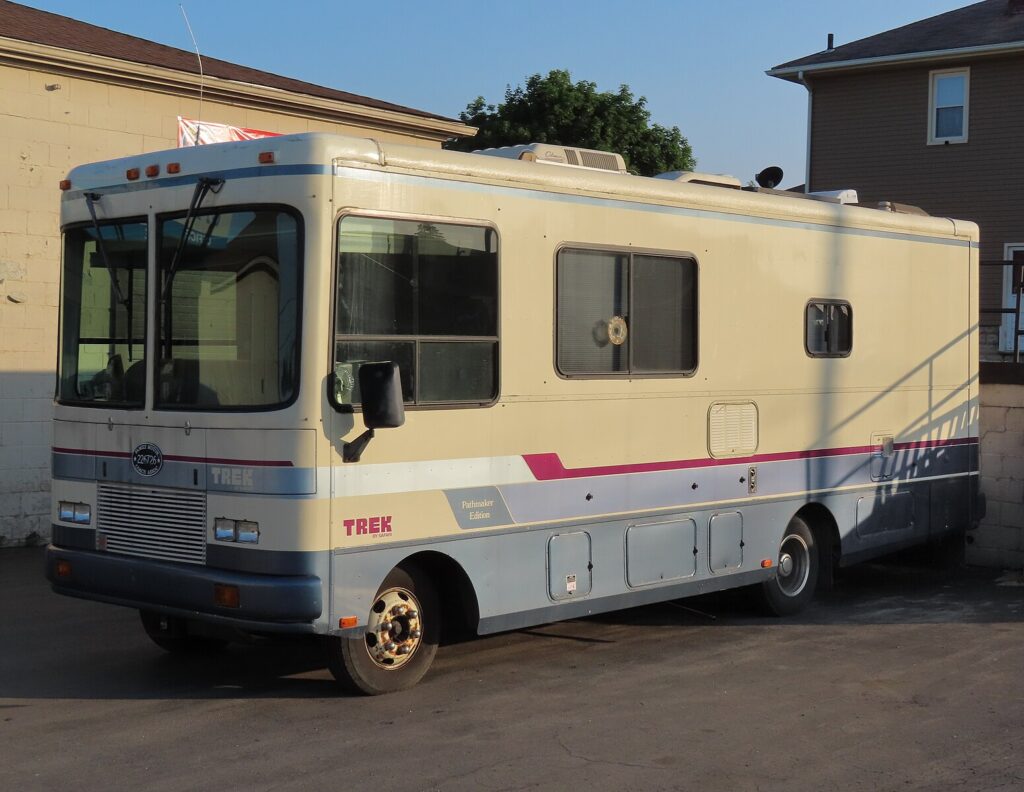
The Safari Trek was an innovative Class A motorhome known for its unique “Electro-Majic” bed that descended from the ceiling, allowing for more living space during the day. Built on a Chevrolet P30 chassis, the Trek offered a compact yet luxurious experience with high-end finishes and ample storage. Despite its clever design and strong following, the Trek never became a mainstream success. The complexity of the bed mechanism and the higher cost compared to larger motorhomes with more conventional layouts limited its market appeal.
Winnebago Elandan (1980s)
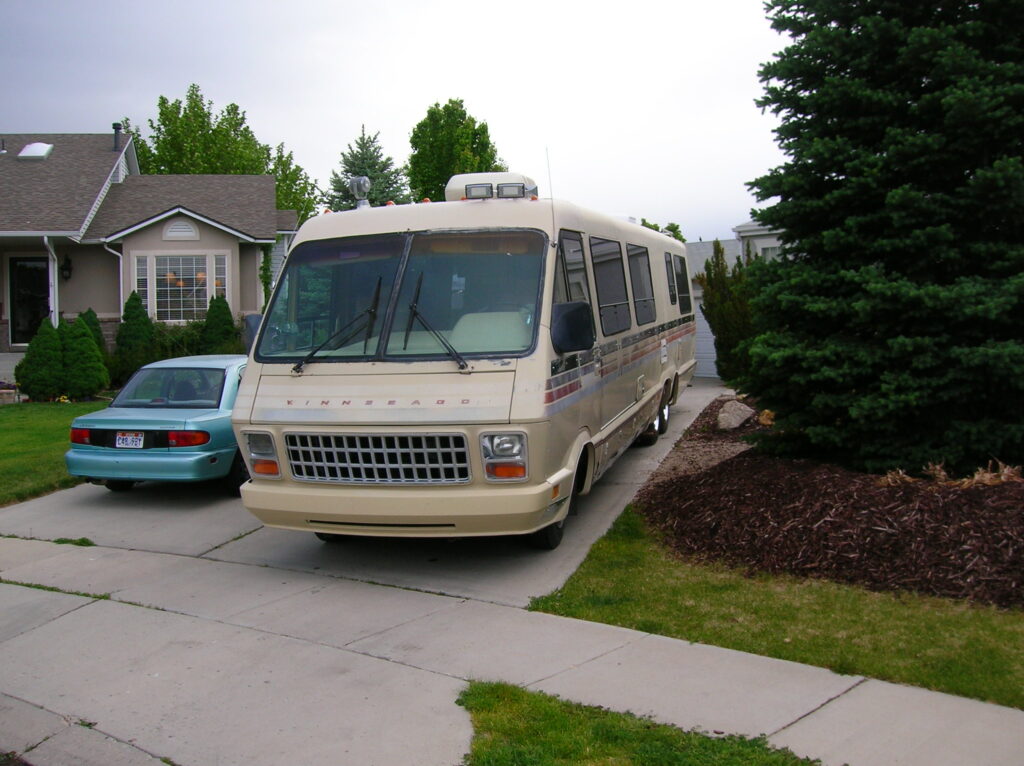
The Winnebago Elandan was a luxurious Class A motorhome introduced in the 1980s, featuring a distinctive, futuristic design with a wide, rounded front end and large panoramic windows. It was equipped with a spacious interior, including high-end materials, advanced technology, and a unique split-level floor plan. Despite its innovative features and premium feel, the Elandan was expensive to produce and struggled to find a large market. Its high price and unique design limited its appeal, leading to its eventual discontinuation.
Nissan Caravan Pop-Top (1970s)

The Nissan Caravan Pop-Top was a compact camper van that featured a unique pop-top roof, allowing for additional headroom and sleeping space. Designed for urban environments, it was easy to drive and park, making it ideal for city dwellers looking for a versatile RV. However, its small size and limited amenities compared to larger RVs made it less popular among traditional RV buyers. The Nissan Caravan Pop-Top was ultimately overshadowed by more spacious and better-equipped RVs, leading to its decline in popularity.
Colani Cormoran (1970s)
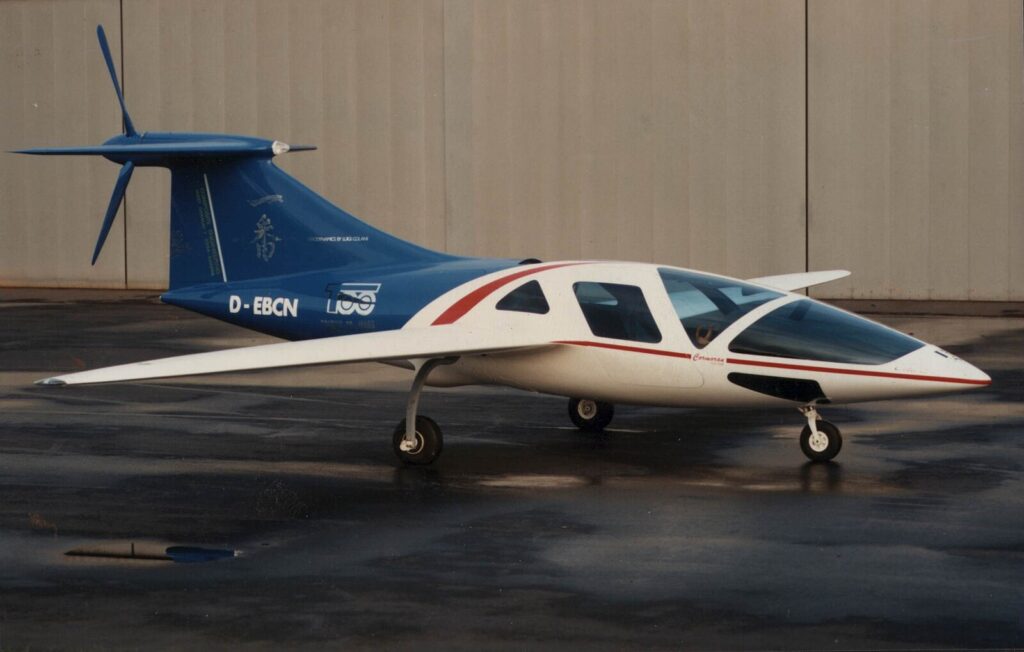
Designed by the eccentric German designer Luigi Colani, the Colani Cormoran was a futuristic motorhome concept that featured a highly aerodynamic, teardrop-shaped body. Its design prioritized fuel efficiency and stability, with a sleek exterior and a luxurious interior that included innovative space-saving features. Despite its groundbreaking design, the Cormoran never went into full production due to its unconventional appearance and high production costs. Today, it remains a rare and fascinating example of visionary RV design that was ahead of its time.
Argosy by Airstream (1970s)
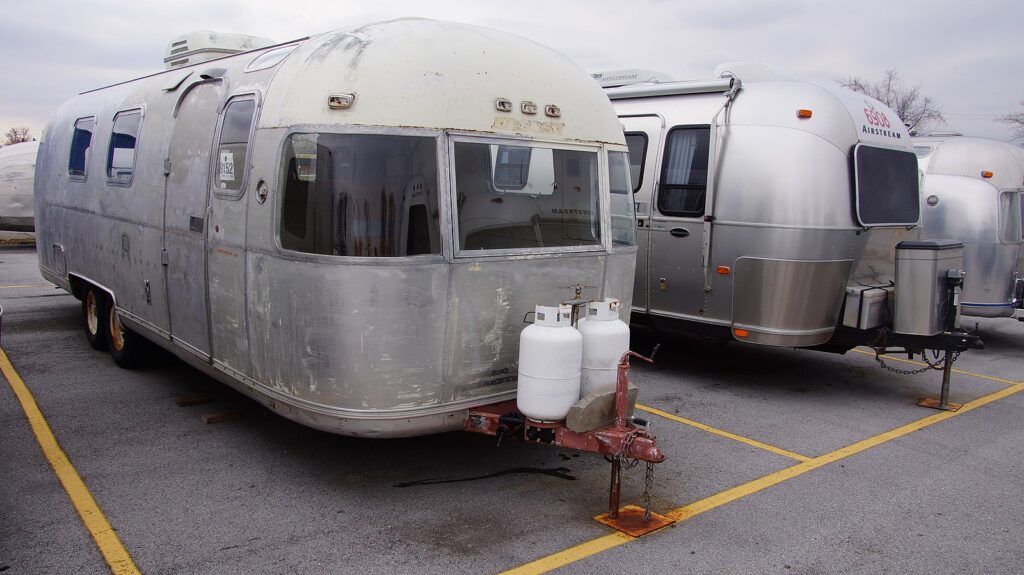
The Argosy by Airstream was an experimental line of motorhomes and travel trailers introduced in the 1970s, known for their distinctive painted aluminum bodies, which contrasted with Airstream’s traditional polished aluminum. The Argosy was designed to be more affordable while offering the same aerodynamic benefits as traditional Airstream models. Despite its innovative design and loyal following, the Argosy struggled to compete with Airstream’s core products, leading to its discontinuation. The unique look and limited production run make the Argosy a collector’s item today.
Sunrader Toyota RV (1980s)
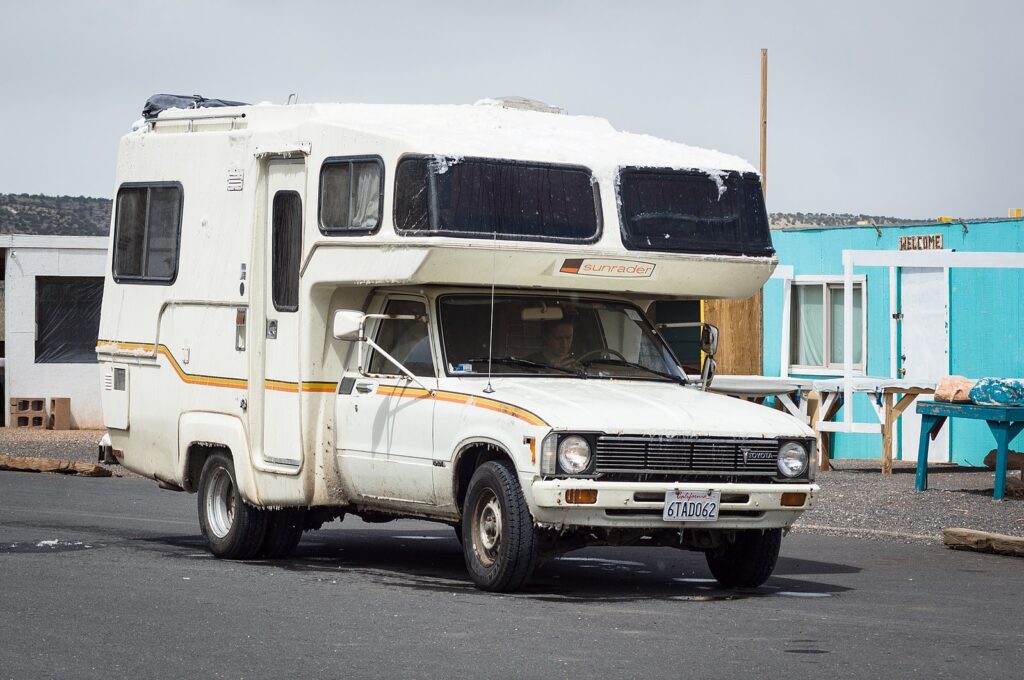
The Sunrader Toyota RV was a compact, fiberglass-bodied motorhome built on the Toyota pickup chassis. It featured a sleek, lightweight design that was both fuel-efficient and easy to maneuver. The Sunrader’s fiberglass construction made it durable and resistant to rust, while its compact size made it popular among solo travelers and couples. Despite its advantages, the Sunrader faced stiff competition from larger RVs with more amenities, and its small size limited its appeal. The model was eventually discontinued, but it remains a sought-after vehicle among vintage RV enthusiasts.
Bowlus Road Chief (1930s)
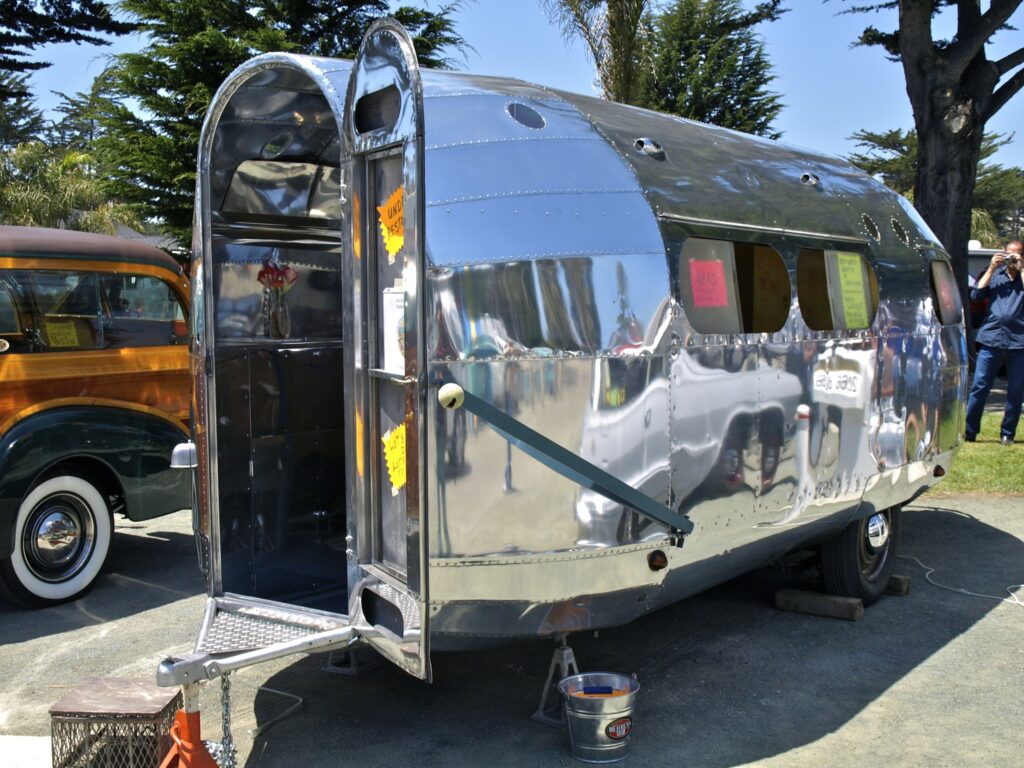
The Bowlus Road Chief was one of the earliest examples of an aerodynamic travel trailer, designed by Hawley Bowlus, the engineer behind Charles Lindbergh’s Spirit of St. Louis. The Road Chief featured a streamlined aluminum body, similar to an aircraft fuselage, which reduced drag and improved fuel efficiency. Despite its innovative design and advanced engineering, the Road Chief was expensive to produce, and the onset of the Great Depression limited its market. Only a few were built before production ceased, making the Bowlus Road Chief a rare and highly collectible piece of RV history.
This article originally appeared on MyCarMakesNoise.
More from MyCarMakesNoise
20 Timeless Luxury Sedans That Embodied Elegance

Luxury sedans are the epitome of elegance and comfort, combining sophisticated design with advanced technology. Throughout automotive history, certain models have stood out for their exceptional style and refinement. Read More.
14 Classic Convertibles That Never Got Their Due
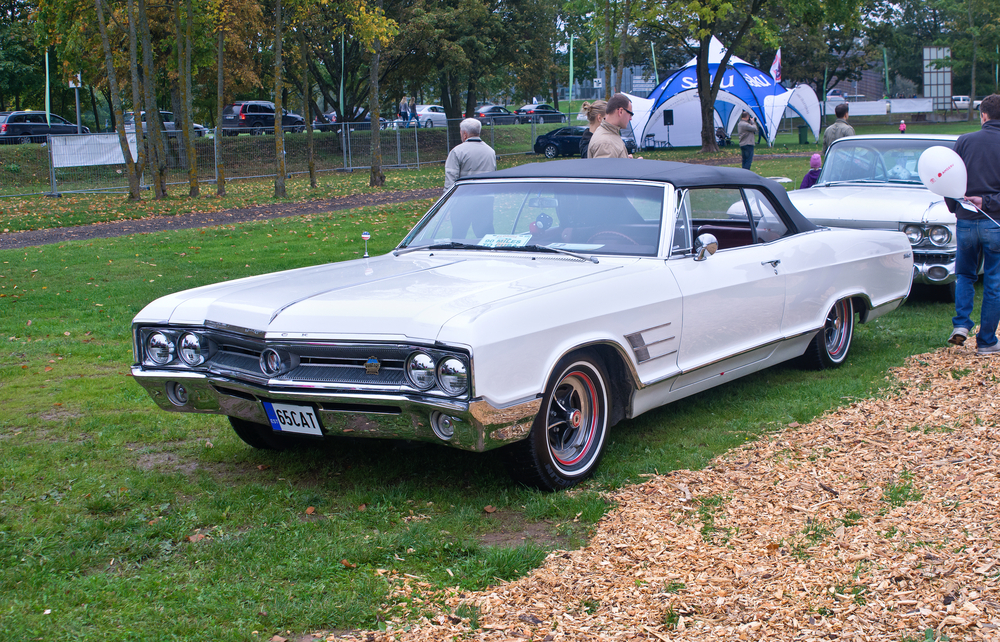
Some classic convertibles had all the right features but never quite captured the spotlight. Whether overshadowed by flashier models or misunderstood in their time, these cars deserve more recognition. Read More.
20 Classic Military Vehicles with High Collector Interest
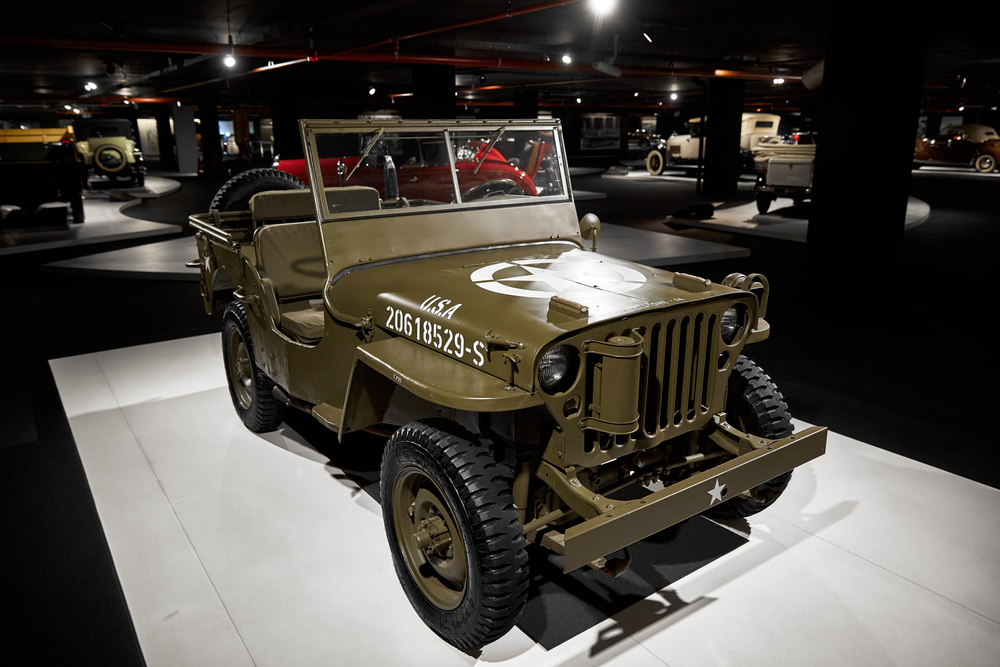
Military vehicles have always captivated collectors with their unique blend of history, engineering, and rugged design. Over the years, certain models have become highly sought after for their rarity and iconic status. Read More.



